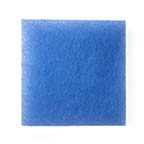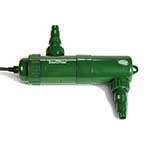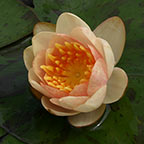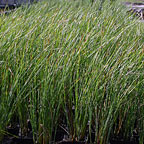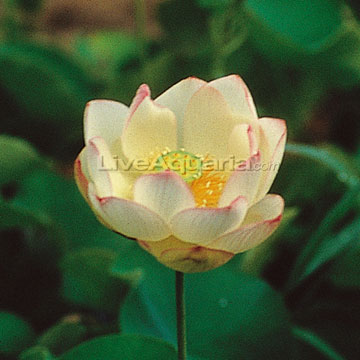
Additional locales and sizes may be available!
Additional locales and sizes may be available! Email me when available|
Product Notes:
· We cannot ship this product to Wisconsin. |
Quick Stats
What do these Quick Stats mean? Click here for more information
What do these Quick Stats mean? Click here for more information
Overview
If your lotus is already potted and has been wintered inside, set it out on your porch in full sun. Keeping it there until the water in the pot is approximately 80°F will get it to bloom sooner. Wait until leaves have started to grow and the pond temperature is above 70°F before submerging the lotus pot in your pond. This prevents the plant from going into shock.
If possible, do not allow water to sit on the surface of the leaves; this will create burns. After a rain shower, tip leaves to allow water to run off them. Lotus leaves naturally repel water, but sometimes rain can puddle in the center. Lotus should be repotted every 3 to 5 years to maintain proper growth. The smaller the pot, the more often it will need to be repotted.
Our lotus plants are shipped as a bare root tuber with no leaves. The approximate shipping size of the tuber is 2" to 4". Zones 5-11.
Please click on "More Information" for potting instructions.
Additional Product Information
Potting procedure:Whether you have a new arrival or a mature lotus that needs repotting, the procedure is the same.
Get the largest round rubber or plastic pot you can find. Ideally, the pot will have at least an 18-inch diameter and be 6-inches deep. Square containers can cause the plant to die if a tuber gets crunched into a corner during high growth periods.
Lotus plants are strong growers, so make sure there are no drain holes in the container that would allow roots to get out.
Lotus can quickly rot in organically rich soil so it is best to use clay soil or potting mix made especially for pond plants.
Add soil until it is about 3" deep in the lotus container. GENTLY pick up lotus tuber, as damaging the new shoots can quickly kill a lotus. The tuber should ideally be white to gray in color and be very firm to the touch. Hairy roots and new shoots will grow from either end. If leaves and/or pads are attached, trim back most of them. Gently place tuber on top of soil, taking care not to damage the new shoots. Slowly add more soil (again being careful of new shoots) until about 1" of soil is over the tuber.
At this point, if you have really sticky clay soil, you can place the lotus in the pond. If you don't have sticky clay, you'll want to add a layer of pea gravel otherwise the tuber will quickly float out of the soil. You may even carefully put a rock on top of the tuber as long as it doesn't damage the new shoots.
If your pond is not yet warm enough (approximately 70°F), you can use dechlorinated water from your house to fill the pot to the rim. The lotus can remain in that container, in the sun, until your pond temperature becomes warm enough.





